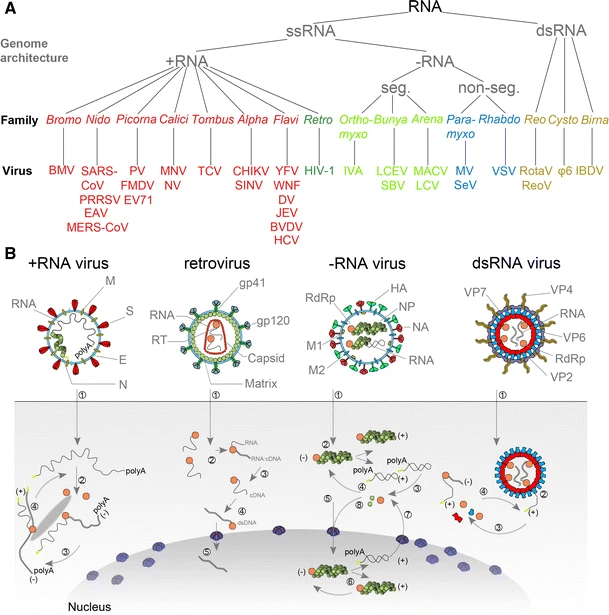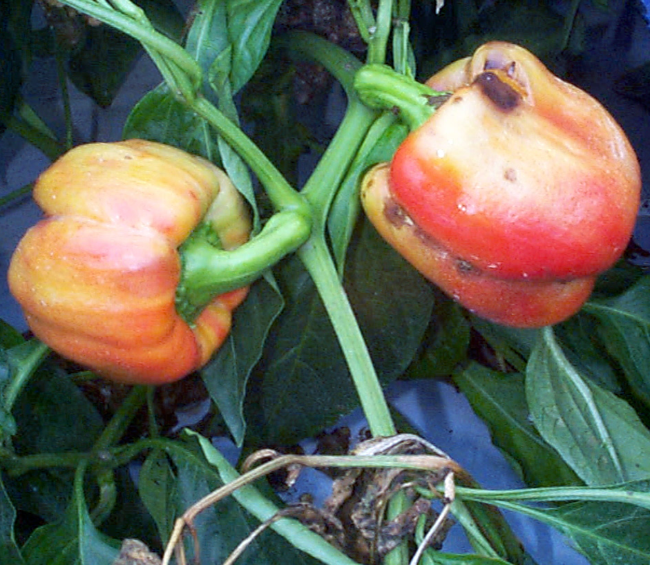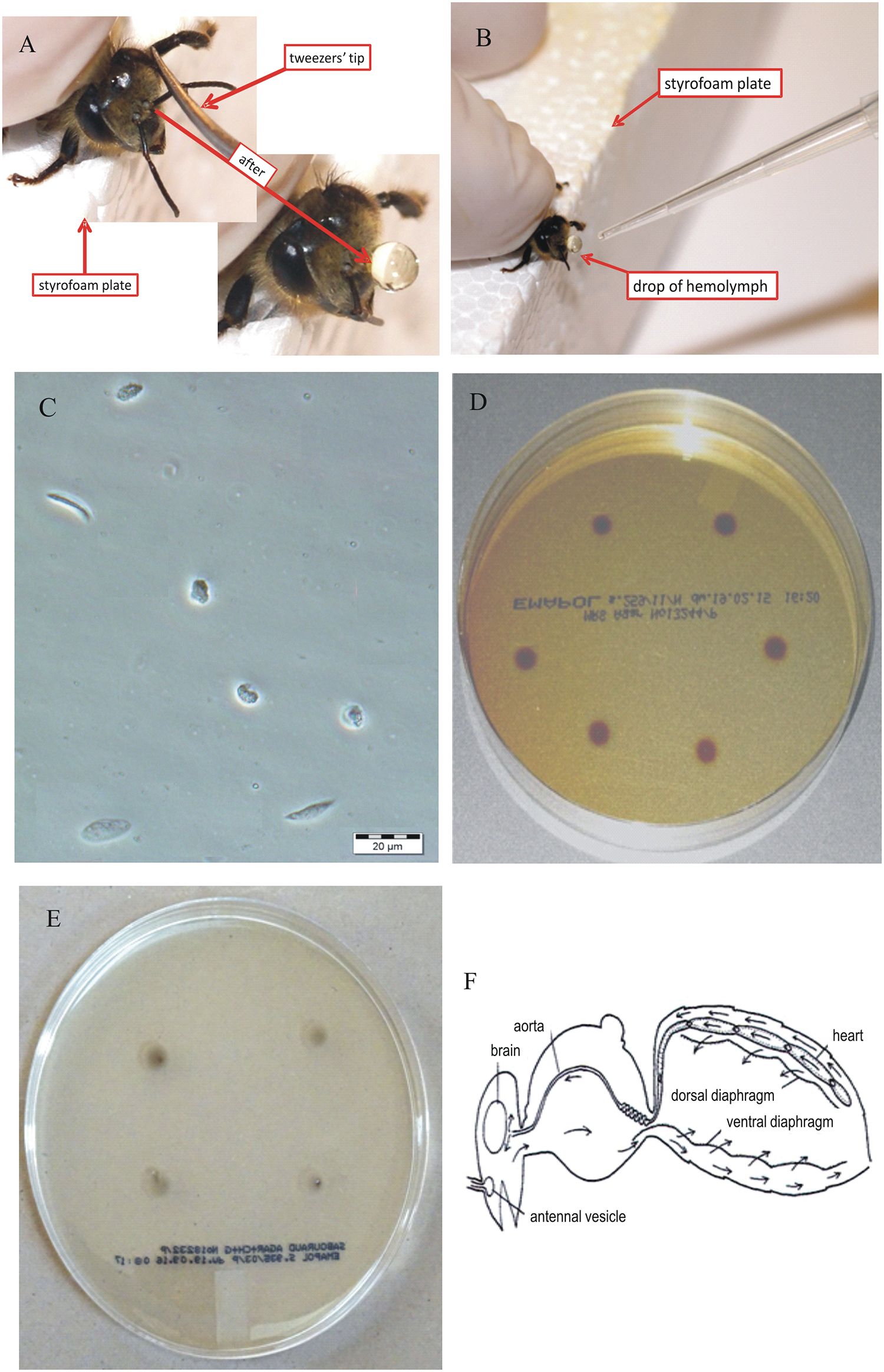|
Blueberry Shoestring Virus
Blueberry shoestring virus (BBSSV) is a disease-causing virus that is commonly transmitted by the aphid vector, '' Illinoia pepperi''.Morimoto, K.M., D.C. Ramsdell, J.M. Gillett, and W.G. Chaney. 1985. Acquisition and transmission of blueberry shoestring virus by its aphid vector Illinoia pepperi. Phytopathology 75:709-712. The blueberry shoestring virus disease is very prominent in highbush and lowbush blueberry plants in the northeastern and upper Midwest of the United States. Symptoms can vary significantly depending on the environment, but the most common disease symptoms are reddish streaking on young stems, reduced vigor and strap-shaped leaves. The blueberry shoestring virus disease can be managed by eliminating the aphid vector through the use of biological, chemical or cultural controls. In severe cases, the disease leads to an extensive loss of yield and marketable fruit.Ramsdell D.C. Blueberry Shoestring. In: Converse R.H., editor. 1987. Virus Diseases of Small Fruits. U ... [...More Info...] [...Related Items...] OR: [Wikipedia] [Google] [Baidu] |
Aphid
Aphids are small sap-sucking insects in the Taxonomic rank, family Aphididae. Common names include greenfly and blackfly, although individuals within a species can vary widely in color. The group includes the fluffy white Eriosomatinae, woolly aphids. A typical life cycle involves flightless females giving Viviparity, live birth to female Nymph (biology), nymphs—who may also be already Pregnancy, pregnant, an adaptation scientists call telescoping generations—without the involvement of males. Developmental biology, Maturing rapidly, females breed profusely so that the number of these insects multiplies quickly. Alate, Winged females may develop later in the season, allowing the insects to colonize new plants. In Temperate climate, temperate regions, a phase of sexual reproduction occurs in the autumn, with the insects often overwintering as eggs. The life cycle of some species involves an alternation between two species of host plants, for example between an annual crop and ... [...More Info...] [...Related Items...] OR: [Wikipedia] [Google] [Baidu] |
RNA Virus
An RNA virus is a virus characterized by a ribonucleic acid (RNA) based genome. The genome can be single-stranded RNA (ssRNA) or double-stranded (Double-stranded RNA, dsRNA). Notable human diseases caused by RNA viruses include influenza, SARS, MERS, COVID-19, Dengue virus, hepatitis C, hepatitis E, West Nile fever, Ebola virus disease, rabies, polio, mumps, and measles. All known RNA viruses, that is viruses that use a homologous RNA-dependent polymerase for replication, are categorized by the International Committee on Taxonomy of Viruses (ICTV) into the realm ''Riboviria''. This includes RNA viruses belonging to ''Group III'', ''Group IV'' or ''Group V'' of the Virus classification#Baltimore classification, Baltimore classification system as well as ''Group VI. Group VI'' viruses are retroviruses, viruses with RNA genetic material that use DNA intermediates in their Viral life cycle, life cycle including HIV-1 and HIV-2 which cause AIDS. The majority of such RNA viruses fall ... [...More Info...] [...Related Items...] OR: [Wikipedia] [Google] [Baidu] |
Neonicotinoid
Neonicotinoids (sometimes shortened to neonics ) are a class of neuro-active insecticides chemically similar to nicotine, developed by scientists at Royal Dutch Shell, Shell and Bayer in the 1980s. Neonicotinoids are among the widest-used insecticides in crop protection. They are also widely employed for veterinary purposes including tick and flea control. The first generation of neonicotinoids includes acetamiprid, clothianidin, dinotefuran, imidacloprid, nitenpyram, nithiazine, thiacloprid and thiamethoxam. The more recently marketed generation of neonicotinoids includes cycloxaprid, imidaclothiz, paichongding, sulfoxaflor, guadipyr, and flupyradifurone. Imidacloprid has been the most widely used insecticide in the world from 1999 through . Because they affect the central nervous system of insects, neonicotinoids kill or deleteriously affect a wide variety of both target and non-target insects. They are often applied to seeds before planting as a prophylactic treatment against h ... [...More Info...] [...Related Items...] OR: [Wikipedia] [Google] [Baidu] |
Insecticides
Insecticides are pesticides used to kill insects. They include ovicides and larvicides used against insect eggs and larvae, respectively. The major use of insecticides is in agriculture, but they are also used in home and garden settings, industrial buildings, for vector control, and control of insect parasites of animals and humans. Acaricides, which kill mites and ticks, are not strictly insecticides, but are usually classified together with insecticides. Some insecticides (including common bug sprays) are effective against other non-insect arthropods as well, such as scorpions, spiders, etc. Insecticides are distinct from insect repellents, which repel but do not kill. Sales In 2016 insecticides were estimated to account for 18% of worldwide pesticide sales. Worldwide sales of insecticides in 2018 were estimated as $ 18.4 billion, of which 25% were neonicotinoids, 17% were pyrethroids, 13% were diamides, and the rest were many other classes which sold for less tha ... [...More Info...] [...Related Items...] OR: [Wikipedia] [Google] [Baidu] |
Coccinella Septempunctata
''Coccinella septempunctata'', the common ladybug, the seven-spot ladybird (or, in North America, seven-spotted ladybug or "C-7"), is a carnivorous beetle native to Europe, Africa and Eastern Asia. It has been introduced to North America and can be found in many regions with a temperate climate. Its elytra are of a red colour, but each punctuated with three black spots, with one further spot being spread over the junction of the two, making a total of seven spots, from which the species derives both its common and scientific names (from the Latin ' = "seven" and ' = "spot"). Biology Although ''C. septempunctata'' larvae and adults mainly eat aphids, they also feed on Thysanoptera, Aleyrodidae, on the larvae of Psyllidae and Cicadellidae, and on eggs and larvae of some beetles and butterflies. They breed one or two generations per year. Adults overwinter in ground litter in parks, gardens and forest edges and under tree bark and rocks. ''C. septempunctata'' has a broa ... [...More Info...] [...Related Items...] OR: [Wikipedia] [Google] [Baidu] |
Ground Tissue
The ground tissue of plants includes all tissues that are neither dermal nor vascular. It can be divided into three types based on the nature of the cell walls. This tissue system is present between the dermal tissue and forms the main bulk of the plant body. # Parenchyma cells have thin primary walls and usually remain alive after they become mature. Parenchyma forms the "filler" tissue in the soft parts of plants, and is usually present in cortex, pericycle, pith, and medullary rays in primary stem and root. # Collenchyma cells have thin primary walls with some areas of secondary thickening. Collenchyma provides extra mechanical and structural support, particularly in regions of new growth. # Sclerenchyma cells have thick lignified secondary walls and often die when mature. Sclerenchyma provides the main structural support to the plant. #Aerenchyma cells are found in aquatic plants. They are also known to be parenchyma cells with large air cavities surrounded by irregul ... [...More Info...] [...Related Items...] OR: [Wikipedia] [Google] [Baidu] |
Plant Sap
Sap is a fluid transported in the xylem cells (vessel elements or tracheids) or phloem sieve tube elements of a plant. These cells transport water and nutrients throughout the plant. Sap is distinct from latex, resin, or cell sap; it is a separate substance, separately produced, and with different components and functions. Honeydew (secretion), Insect honeydew is called sap, particularly when it falls from trees, but is only the remains of eaten sap and other plant parts. Types of sap Saps may be broadly divided into two types: xylem sap and phloem sap. Xylem sap Xylem sap (pronounced ) consists primarily of a watery solution of plant hormone, hormones, dietary mineral, mineral elements and other nutrients. Transport of sap in xylem is characterized by movement from the roots toward the leaf, leaves. Over the past century, there has been some controversy regarding the mechanism of xylem sap transport; today, most plant scientists agree that the cohesion-tension theory be ... [...More Info...] [...Related Items...] OR: [Wikipedia] [Google] [Baidu] |
Xylem
Xylem is one of the two types of transport tissue (biology), tissue in vascular plants, the other being phloem; both of these are part of the vascular bundle. The basic function of the xylem is to transport water upward from the roots to parts of the plants such as stems and leaves, but it also transports plant nutrition, nutrients. The word ''xylem'' is derived from the Ancient Greek word (), meaning "wood"; the best-known wood organism is plants, though it is found throughout a plant. The term was introduced by Carl Nägeli in 1858. Structure The most distinctive xylem cell (biology), cells are the long tracheary elements that transport water. Tracheids and vessel elements are distinguished by their shape; vessel elements are shorter, and are connected together into long tubes that are called ''vessels''. Wood also contains two other type of cells: Ground tissue#Parenchyma, parenchyma and ground tissue#Fibres, fibers. Xylem can be found: * in vascular bundles, present in ... [...More Info...] [...Related Items...] OR: [Wikipedia] [Google] [Baidu] |
Phloem
Phloem (, ) is the living tissue in vascular plants that transports the soluble organic compounds made during photosynthesis and known as ''photosynthates'', in particular the sugar sucrose, to the rest of the plant. This transport process is called translocation. In trees, the phloem is the innermost layer of the bark, hence the name, derived from the Ancient Greek word (''phloiós''), meaning "bark". The term was introduced by Carl Nägeli in 1858. Different types of phloem can be distinguished. The early phloem formed in the growth apices is called protophloem. Protophloem eventually becomes obliterated once it connects to the durable phloem in mature organs, the metaphloem. Further, secondary phloem is formed during the thickening of stem structures. Structure Phloem tissue consists of conducting cells, generally called sieve elements, parenchyma cells, including both specialized companion cells or albuminous cells and unspecialized cells and supportive cells, such ... [...More Info...] [...Related Items...] OR: [Wikipedia] [Google] [Baidu] |
Plant Virus
Plant viruses are viruses that have the potential to affect plants. Like all other viruses, plant viruses are obligate intracellular parasites that do not have the molecular machinery to replicate without a host. Plant viruses can be pathogenic to vascular plants ("higher plants"). Many plant viruses are rod-shaped, with protein discs forming a tube surrounding the viral genome; isometric particles are another common structure. They rarely have an envelope. The great majority have an RNA genome, which is usually small and single stranded (ss), but some viruses have double-stranded (ds) RNA, ssDNA or dsDNA genomes. Although plant viruses are not as well understood as their animal counterparts, one plant virus has become very recognizable: '' tobacco mosaic virus'' (TMV), the first virus to be discovered. This and other viruses cause an estimated US$60 billion loss in crop yields worldwide each year. Plant viruses are grouped into 73 genera and 49 families. However, these fi ... [...More Info...] [...Related Items...] OR: [Wikipedia] [Google] [Baidu] |
Hemolymph
Hemolymph, or haemolymph, is a fluid, similar to the blood in invertebrates, that circulates in the inside of the arthropod's body, remaining in direct contact with the animal's tissues. It is composed of a fluid plasma in which hemolymph cells called hemocytes are dispersed. In addition to hemocytes, the plasma also contains many chemicals. It is the major tissue type of the open circulatory system characteristic of arthropods (for example, arachnids, crustaceans and insects). In addition, some non-arthropods such as mollusks possess a hemolymphatic circulatory system. Oxygen-transport systems were long thought unnecessary in insects, but ancestral and functional hemocyanin has been found in the hemolymph. Insect "blood" generally does not carry hemoglobin, although hemoglobin may be present in the tracheal system instead and play some role in respiration. Method of transport In the grasshopper, the closed portion of the system consists of tubular hearts and an ao ... [...More Info...] [...Related Items...] OR: [Wikipedia] [Google] [Baidu] |
Buds
In botany, a bud is an undeveloped or Plant embryogenesis, embryonic Shoot (botany), shoot and normally occurs in the axil of a leaf or at the tip of a Plant stem, stem. Once formed, a bud may remain for some time in a dormancy, dormant condition, or it may form a shoot immediately. Buds may be specialized to develop flowers or short shoots or may have the potential for general shoot development. The term bud is also used in zoology, where it refers to an outgrowth from the body which can develop into a new individual. Overview The buds of many woody plants, especially in temperate or cold climates, are protected by a covering of modified leaves called ''scales'' which tightly enclose the more delicate parts of the bud. Many bud scales are covered by a gummy substance which serves as added protection. When the bud develops, the scales may enlarge somewhat but usually just drop off, leaving a series of horizontally-elongated scars on the surface of the growing stem. By means of ... [...More Info...] [...Related Items...] OR: [Wikipedia] [Google] [Baidu] |







